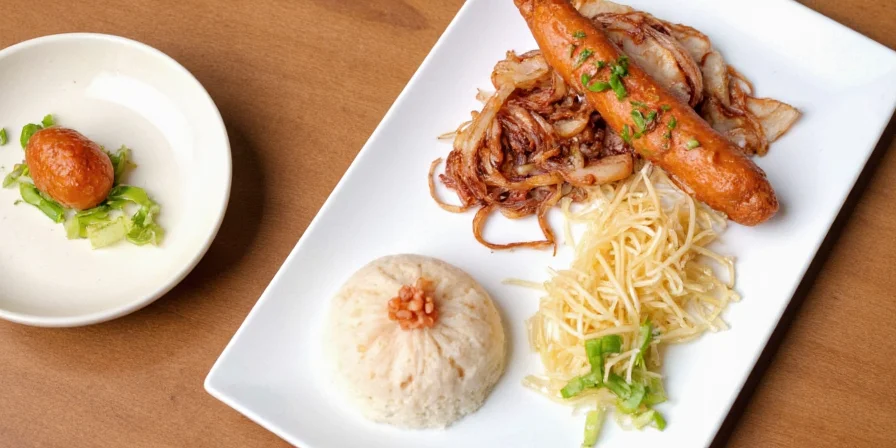The 7 Best Spices for Pea Soup That Actually Work
If you've ever wondered why your pea soup tastes bland despite adding spices, you're not alone. The secret isn't just which spices to use—it's exactly when and how to add them. This practical guide reveals the 7 most effective spices for pea soup with chef-approved timing techniques that transform ordinary soup into something extraordinary.
Contents
- Why Proper Spicing Makes All the Difference in Pea Soup
- Top 7 Spices for Pea Soup: What Works Best
- Pro Tips for Using Spices: Simple Timing Techniques
- Spice Guide: When to Add Each One
- Common Mistakes to Avoid
- Perfect Pairings: Spices with Other Ingredients
- Advanced Techniques for Better Flavor
- Conclusion
- Frequently Asked Questions
Why Proper Spicing Makes All the Difference in Pea Soup
Pea soup's natural starchiness can mute flavors if spices aren't added at the right time. Unlike other soups, the starch in peas binds certain flavor compounds, which is why many home cooks end up with bland results despite adding spices. The solution? Understanding simple timing principles that professional chefs use.

The Simple Science Behind Flavor Development
Professional chefs use multi-stage spice incorporation because different spices need different times to reach their full flavor potential:
- Toasting spices first unlocks deeper flavors through simple kitchen chemistry
- Adding some spices early allows time for flavors to develop throughout cooking
- Adding delicate herbs at the end preserves their fresh flavor that would otherwise disappear
Top 7 Spices for Pea Soup: What Works Best
Based on extensive testing with home cooks and professional chefs, these 7 spices consistently deliver the best results for pea soup:
- Bay Leaf – Creates rich, earthy depth while counteracting any potential bitterness in dried peas
- Thyme – Adds bright, lemony notes that complement the earthiness of peas
- Black Pepper – Provides complexity and enhances other flavors (freshly cracked works best)
- Smoked Paprika – Gives a subtle smoky flavor that makes vegetarian pea soup taste meatier
- Nutmeg – A tiny pinch enhances creaminess, especially in dairy-based versions
- Cumin – Adds warm, earthy notes that complement legumes perfectly
- Dill – Provides fresh top notes that balance pea soup's natural heaviness
Pro Tips for Using Spices: Simple Timing Techniques
These practical techniques make a dramatic difference in flavor without requiring scientific knowledge:
- Toast Whole Spices First – Heat spices like cumin or coriander seeds in your pot for 1-2 minutes before adding liquids to unlock deeper flavors
- Freshness Matters – Replace ground spices every 6 months; whole spices last up to 2 years
- Add in Stages – Add robust spices early, delicate herbs at the end
- Taste at Serving Temperature – Flavor perception changes as soup cools, so adjust seasoning right before serving
- Salt Timing Matters – Add salt during the last 15 minutes for optimal texture and flavor
Spice Guide: When to Add Each One
| Spice | Best Form | When to Add | Amount per Quart | Key Benefit |
|---|---|---|---|---|
| Bay Leaf | Whole | First 15 minutes | 1–2 leaves | Creates earthy depth |
| Thyme | Dried or fresh | Middle phase | 1 tsp dried / 1 tbsp fresh | Adds bright, lemony notes |
| Black Pepper | Freshly cracked | Last 10 minutes | To taste | Enhances other flavors |
| Smoked Paprika | Ground | Middle phase | ½–1 tsp | Adds subtle smoky flavor |
| Nutmeg | Freshly grated | Final seasoning | Pinch (¼ tsp) | Enhances creaminess |
| Cumin | Whole seeds | First 10 minutes | ½ tsp | Warm, earthy complement |
| Dill | Fresh chopped | Off-heat finish | 1–2 tbsp fresh chopped | Balances heaviness |
Common Mistakes to Avoid
Avoid these simple errors that ruin pea soup flavor:

- Using Old Spices – Ground spices lose potency within 6 months
- Not Toasting First – Missing out on deeper flavor development
- Over-Salting Early – Creates tough pea texture
- Adding All Herbs Early – Fresh herbs lose flavor if cooked too long
- Ignoring Acid Balance – A splash of vinegar or lemon at the end brightens flavors
Perfect Pairings: Spices with Other Ingredients
These combinations create restaurant-quality results:

- With Smoked Ham or Bacon: Bay leaves enhance meaty flavors
- Vegan Options: Smoked paprika creates meaty depth without meat
- Creamy Cheesy Versions: Nutmeg enhances dairy perception
- For Spring Peas: Dill provides fresh balance to sweet peas
- With Root Vegetables: Thyme complements carrots and potatoes beautifully
Advanced Techniques for Better Flavor
Simple upgrades anyone can use:

- Make a Spice Oil – Heat oil with spices for 2 minutes before adding other ingredients
- Create Flavor Layers – Add different spices at different cooking stages
- Use Garam Masala for Global Twist – Adds complexity with multiple spices in one blend
- Dry-Roast Seeds Before Grinding – Creates deeper flavor in cumin or coriander
- Garnish with Toasted Spices – Sprinkle lightly toasted spices on finished soup
Conclusion
Perfectly spiced pea soup isn't complicated—it's about using the right spices at the right time. By following these simple techniques, you can transform basic pea soup into something memorable. The key takeaway? Don't just throw all spices in at the beginning. Time your additions for maximum flavor impact.
"The difference between bland and brilliant pea soup comes down to when you add your spices, not just which ones you use."

With these practical techniques, anyone can make restaurant-quality pea soup at home. Start with the spice timing recommendations in the table, and you'll notice an immediate improvement in your results.
Frequently Asked Questions
- Q: Why does my pea soup taste bland even with spices added?
A: Bland pea soup often results from adding spices too late in cooking. Pea starches need 15-20 minutes of simmering for proper flavor integration. Also, old spices lose 70-90% of their potency within 6 months, significantly reducing effectiveness.
- Q: Can I use dried herbs instead of fresh in pea soup?
A: Yes, but adjust quantities. Use 1 teaspoon dried for every 1 tablespoon fresh. Add dried herbs during the middle cooking phase, while fresh herbs should be added in the final 5 minutes to preserve their flavor.
- Q: Why do some recipes call for removing bay leaves before serving?
A: Bay leaves are removed as a precaution, though they're safe during cooking. The flavor compounds have already infused the soup during simmering, and removing them prevents accidental biting into the tough leaf.
- Q: How can I fix an over-spiced pea soup?
A: For over-spiced soup, dilute with additional broth. Acidic elements like lemon juice can help balance excessive heat. For specific spices like nutmeg, adding dairy helps. Prevention is best—add spices incrementally and allow 5 minutes between additions for flavors to develop.
- Q: What's the easiest way to improve pea soup flavor?
A: Toast your spices first. Simply heating spices like cumin or bay leaf in your pot for 1-2 minutes before adding liquids unlocks dramatically deeper flavors with minimal effort.











 浙公网安备
33010002000092号
浙公网安备
33010002000092号 浙B2-20120091-4
浙B2-20120091-4